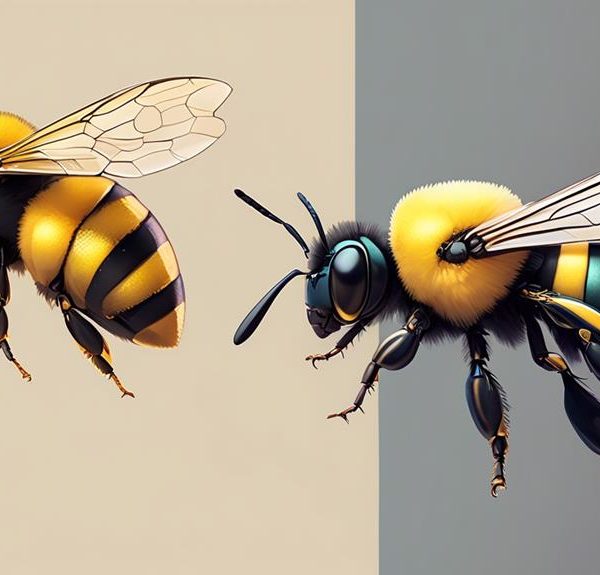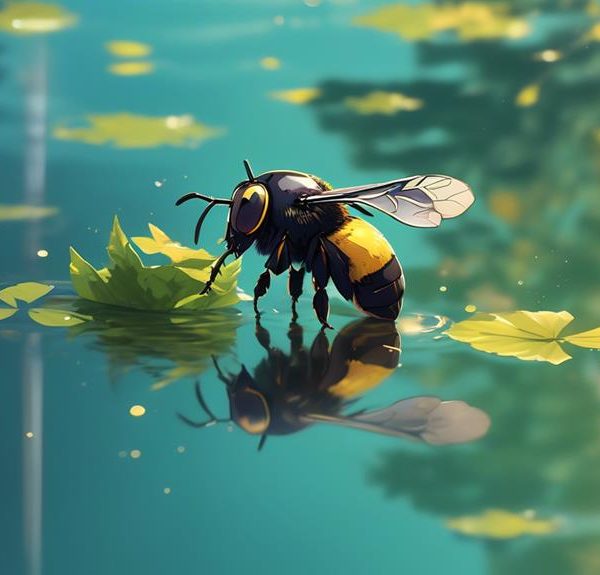Homing in Wisconsin's lush forests, discover the vital role and potential havoc of Carpenter Bees in your backyard.
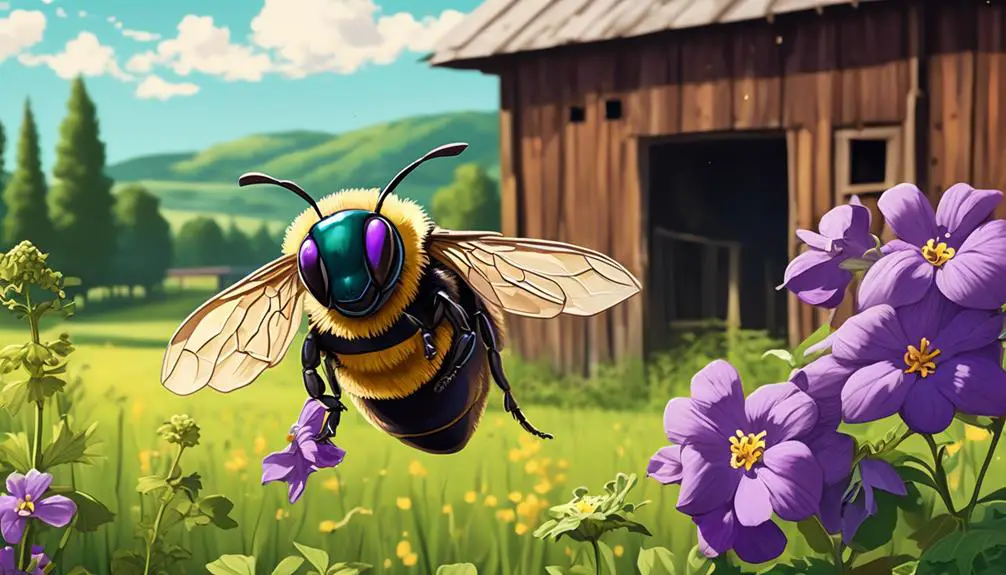
Carpenter Bee Wisconsin
When you glance at your wooden deck or gazebo, you might notice unexpected guests who've taken up residency, the Carpenter Bees. Now, don't let the name fool you. They're not there to help with your woodworking projects. Instead, these industrious insects are known for their propensity to bore into wood, creating intricate tunnels for shelter and rearing their young.
Wisconsin, with its lush forests and diverse flora, offers a perfect haven for these creatures. You might be wondering, why should you care about these uninvited tenants? Well, their presence impacts more than just your weekend DIY projects.
To truly grasp the significance of Carpenter Bees in Wisconsin, we need to inspect their behaviors, their roles within the ecosystem, and the potential damage they can cause to your home.
Key Takeaways
- Carpenter bees in Wisconsin are important pollinators, contributing to plant biodiversity.
- They prefer softwoods like pine, cedar, and redwood for nesting, but will also burrow into hardwoods.
- Carpenter bees choose south or east-facing locations for their nests to maximize sunlight exposure.
- Regular inspection and preventative measures such as painting or varnishing wood surfaces can help prevent carpenter bee damage.
Understanding the Carpenter Bee
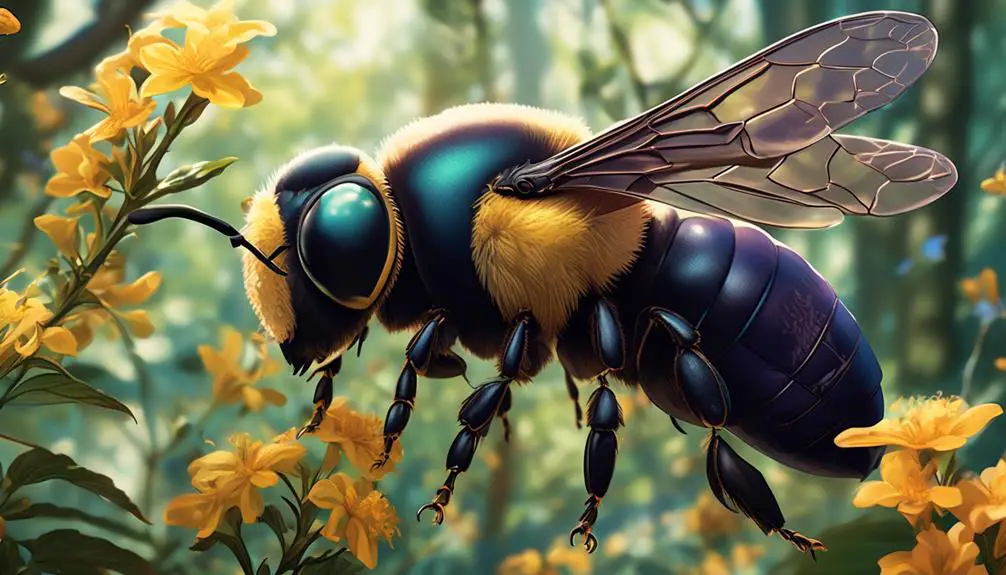
Let's delve deeper into understanding the carpenter bee, a fascinating species that, despite common misconceptions, plays a crucial role in our ecosystem. You may recognize them by their robust, shiny, dark body that contrasts with the furry, striped appearance of honeybees. They're named for their ability to bore into wood, where they create intricate tunnels to lay their eggs.
The carpenter bee is solitary by nature, unlike the sociable honeybee. Each female is fertile and builds her own nest, exhibiting a unique independence that sets them apart from other bee species. Despite the damage they can do to wooden structures, they're not merely pests; they're important pollinators. You may be surprised to learn that their robust size allows them to pollinate flowers others can't reach, contributing significantly to plant biodiversity.
You must understand their behavior to mitigate potential harm without harming the bees. They're not generally aggressive, and males, despite their intimidating hovering presence, lack a stinger altogether. Remember, every living creature has its place in our ecosystem, and the carpenter bee is no different.
With knowledge, we can coexist and benefit from these unique, industrious creatures.
Carpenter Bee Identification Tips
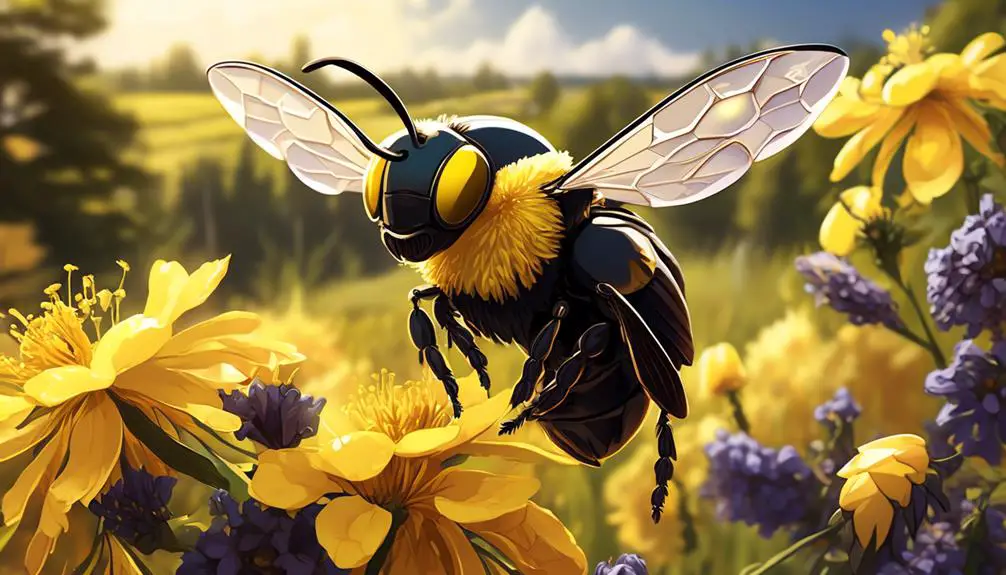
Having understood the vital role of carpenter bees in our ecosystem, you may now want to learn how to identify these industrious creatures accurately.
The first tip is to observe their size and shape. Carpenter bees are large, measuring between half an inch to an inch in length. They've a robust, bumblebee-like physique but don't be fooled by their resemblance.
Look closely at their abdomen. Unlike bumblebees, carpenter bees have a shiny, hairless, and black abdomen. You'll note an absence of the yellow and black stripes typically associated with their bumblebee cousins.
Another tell-tale sign is their behavior. Carpenter bees are solitary creatures. If you spot a bee hovering around wooden structures, it's likely a carpenter bee. They're known for boring into wood to build nests, hence the name.
Finally, male carpenter bees have a distinctive feature. They possess a white or yellow face, unlike the females, which have a black face. However, don't fret about getting too close to identify the gender. Male carpenter bees may be more aggressive, but they're incapable of stinging.
Using these tips, you'll be proficient in identifying carpenter bees in no time.
Habitats of Wisconsin's Carpenter Bees

In the diverse landscape of Wisconsin, you'll find carpenter bees inhabiting areas with abundant wood sources, which they use for nesting and reproduction. These insects have a preference for softwoods like pine, cedar, and redwood, but aren't picky; they'll burrow into hardwoods as well, given the opportunity.
In urban settings, you'll find them in wooden structures such as decks, railings, benches, and fences. In rural areas, they favor dead or decaying trees, fallen logs, and even old wooden farm equipment. The bees carve out tunnels in the wood, creating chambers where they lay eggs and tend to their young.
Climate also plays a significant role in their habitat choice. Carpenter bees are most active in warm, sunny conditions. Therefore, they tend to choose south or east-facing locations for their nests to maximize sunlight exposure.
Remember, these bees are solitary creatures. Unlike honeybees, each female constructs her own nest. However, they're not territorial, so it's common to see multiple nests in close proximity.
Understanding the habitats of Wisconsin's carpenter bees can help you identify potential nesting sites around your property, aiding in prevention and control efforts.
Carpenter Bees and the Ecosystem
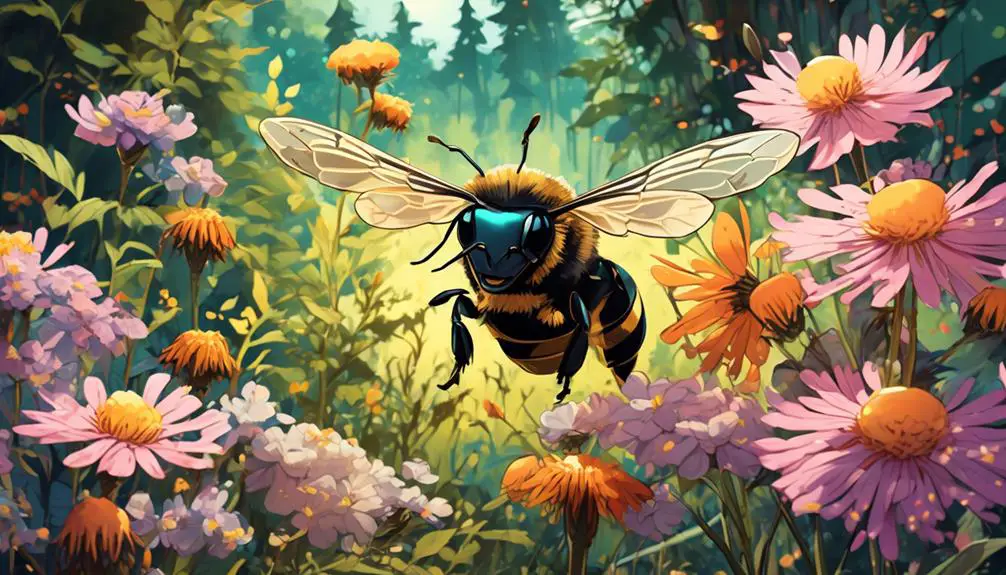
While identifying potential nesting sites of Wisconsin's carpenter bees can aid in prevention and control efforts, it's equally essential to understand their impactful role in the ecosystem. You might be surprised to discover that these industrious insects are not only skilled builders but also key contributors to our environment.
Despite their reputation for damaging wood structures, carpenter bees play a vital role in pollination. As they forage for nectar, they inadvertently transfer pollen grains between flowers, thereby facilitating plant reproduction. This pollination process supports the growth of various plants, including some used in human agriculture, and contributes to biodiversity.
Here's a simple table showing the ecosystem role of carpenter bees:
Ecosystem Role | Significance |
|---|---|
Pollination | Supports plant reproduction and biodiversity |
Nest Building | Creates habitats for other organisms |
Food Source | Provides nourishment for certain bird species |
Moreover, the nests they create in wood are often used by other species, adding to habitat diversity. They're also a food source for various bird species, thereby contributing to the food chain. In sum, Wisconsin's carpenter bees are essential players in supporting the ecological balance.
Preventing Carpenter Bee Damage

To mitigate the potential damage caused by carpenter bees, it's crucial to understand and implement effective prevention strategies.
First, you need to inspect your property regularly, paying close attention to wooden structures. Look for small, round holes, which are a telltale sign of carpenter bee activity.
Secondly, consider applying a coat of paint or varnish to exposed wood surfaces. Carpenter bees prefer untreated wood, so this can be a powerful deterrent. You might also want to replace particularly vulnerable wood, such as softwoods, with harder, less appealing ones or with synthetic materials.
Insecticides might be an option, but they should be used as a last resort due to their potential environmental impact. If you opt for this, make sure to apply the insecticide in the late evening when the bees are less active.
Lastly, professional pest control services are also an option. They can provide a thorough inspection, targeted treatments, and ongoing prevention strategies. Remember, it's always better to prevent than to repair. By taking proactive steps, you can protect your property from potential carpenter bee damage.
Conclusion
You've now got a deep understanding of Wisconsin's carpenter bees. From identifying them, understanding their habitats, to recognizing their role in the ecosystem, you're well-versed.
However, remember to be vigilant and proactive in preventing potential damage. By appreciating their ecological significance and managing their presence wisely, you're contributing to a balanced, thriving Wisconsin ecosystem.
Keep learning and stay informed to play your part in local biodiversity preservation.

